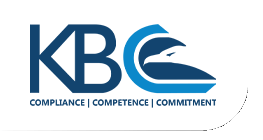By Sian Thurtell, Chief Operating Officer at KBC Health & Safety
Xx July 2024
Competence serves as the bedrock upon which a secure and efficient workplace is built. It equips employees with the skills to execute their tasks proficiently while fostering adaptability to industry change and technological advancements. In the context of workplace safety, competence elevates technical expertise into the ability to accurately assess risks, make well-informed decisions, and respond effectively within dynamic working environments.
Employees with up-to-date knowledge and skills have more confidence in their abilities to identify and mitigate potential hazards, but this confidence requires organisations to invest in ongoing skills development and reskilling to establish the foundation of competency. Despite being an ongoing requirement, this is a worthwhile investment for safety-conscious organisations, as it will ultimately translate to a substantial reduction in workplace accidents and injuries.
Competence enhances safety performance
The concept of the “Three Cs of Safety”, in which Compliance, Competence, and Commitment are inextricably intertwined, highlights the pivotal role of know-how and proficiency in achieving a safe and productive workplace. While commitment and compliance are essential, these are optimally realised when employees are equipped with the necessary skills and knowledge to perform with competence. A competent workforce is more likely to recognise hazards, adhere to safety protocols, and respond appropriately to challenges, which in turn contributes to the advancement of a culture of safety.
To cultivate a competent workforce, organisations must prioritise ongoing skill development and reskilling, which can be achieved in several ways. On-the-job training and coaching offer invaluable opportunities for practical skill acquisition and mentorship, and regular refresher training sessions ensure that employees stay abreast of the latest safety practices, regulations, and procedural updates for their industry. Additionally, providing access to online learning resources empowers employees to take ownership of their professional development, while encouraging employees to pursue formal certifications demonstrates a commitment to continuous learning and professional growth.
The link between competence, productivity, and performance
A competent workforce is not only safer but also more productive and efficient. When employees possess the necessary skills and confidence, they are better equipped to perform their tasks effectively and contribute to organisational goals. A skilled workforce is less likely to be involved in accidents or incidents that can disrupt operations and incur costly downtime.
Investing in competence should not be seen as an operational expense, but rather as a move that aligns seamlessly with the organisation’s strategic safety objectives. By prioritising skill development, organisations create a safer work environment, reduce the frequency and severity of accidents, and enhance overall operational efficiency. This, in turn, contributes to cost savings, improved employee morale, and a positive business reputation.
Building a competent workforce
Cultivating a culture of lifelong learning is essential to sustaining a competent workforce. By offering diverse learning opportunities, such as formal training, workshops, conferences, and online courses, organisations empower employees to expand their knowledge and skills. Additionally, providing access to mentorship programmes, job rotations, and project-based learning can facilitate skill development and knowledge sharing.
Recognising and rewarding employees for their learning achievements is also vital in reinforcing the importance of continuous development. Celebrating successes, both big and small, motivates employees to pursue further learning opportunities. Furthermore, creating a psychologically safe environment where employees feel comfortable in raising objections to unsafe working conditions or voicing uncertainty is essential for fostering a culture of learning through accountability. Open communication channels and a willingness to share knowledge and experiences among employees can facilitate knowledge transfer and enhance collaboration.
Competence – the cornerstone of workplace safety
Promoting competence is indispensable for organisations aiming to create a robust safety culture. As one of the critical pillars of safety – alongside commitment and compliance – competence empowers employees to actively participate in preventing accidents and injuries. When employees possess the necessary skills and knowledge, they are better equipped to identify hazards, understand safety protocols, and make informed decisions in high-pressure situations.
By investing in employee development and fostering a culture of continuous learning, organisations not only enhance safety performance but also cultivate a workforce that is adaptable, resilient, and committed to creating a safer work environment. Fundamentally, competence is the catalyst that transforms safety from a passive obligation into a proactive and integral part of organisational culture.



